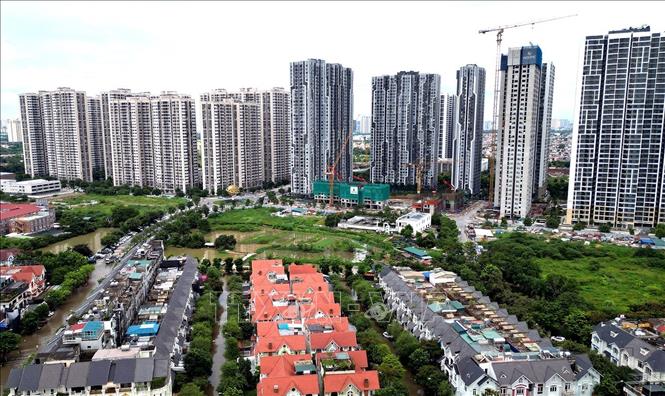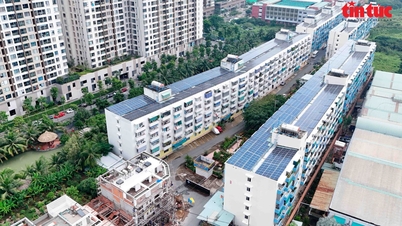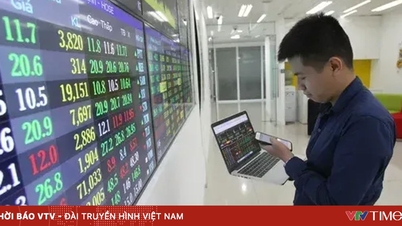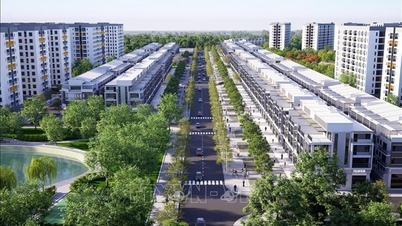
House prices far exceed people's incomes
According to a survey conducted by the Vietnam Real Estate Research Institute (VIRES) in September 2025, the average price of primary apartments in Hanoi has reached an average of 92.9 million VND/m2. Meanwhile, in Ho Chi Minh City, this figure is even higher, up to 135.3 million VND/m2. This price is very different from the average income of Vietnamese workers today, which only fluctuates between 8 and 10 million VND/month.
The large gap between housing prices and incomes is making the dream of owning a home increasingly distant for the majority of people, especially the low- and middle-income groups. In this situation, the Government 's Draft Resolution on housing price control mechanism is considered an important policy step, demonstrating the determination to reorient the market and protect people's right to access housing.
Analysis by the Ministry of Construction shows that, over the past years, real estate prices in large cities have tended to increase abnormally, not fully reflecting the actual law of supply and demand. Part of the reason comes from speculation, price inflation and lack of transparency in planning information, causing "virtual fever" in many localities. This situation not only distorts the market but also negatively affects social psychology.
The structure of real estate products is also seriously unbalanced, with most of the supply concentrated in the middle and high-end segments. Meanwhile, the social housing, affordable housing and rental housing segments are still in serious shortage. This causes the real housing demand - which accounts for a large proportion in society - to not be properly met.
Currently, market regulation tools such as taxes, credit, planning or land pricing are not synchronized and ineffective. The lack of standard indicators and reliable data systems makes it difficult for management agencies to intervene in a timely manner, while people, especially the young generation and urban workers, increasingly have difficulty accessing suitable housing.
According to Mr. Bui Van Doanh - Director of the Vietnam Real Estate Research Institute, the Government's early introduction of mechanisms and policies to control housing prices is urgent and needs to be implemented synchronously and drastically. Because this is a social security issue. The Vietnamese Constitution affirms that housing is an essential need of the people. However, with the current price level, even the middle-income group has difficulty accessing housing. This negatively affects the quality of life, labor productivity and the development momentum of society.
“Many young people today do not dare to get married or have children because they do not have a stable place to live. If this trend continues, it will affect the population structure and human resources of the country,” Mr. Doanh warned.
From a market perspective, housing prices in some areas are pushed to unreasonably high levels, far exceeding their real value. This causes the market to become distorted, lacking confidence and illiquid. When real estate is illiquid, cash flow stagnates, businesses cannot repay their debts, leading to risks for the banking system and the economy in general. At that time, the macro economy will inevitably be negatively impacted if the market falls into a "frozen" state.
In the world, most financial crises originate from real estate bubbles. Therefore, Vietnam needs to act quickly, proactively cool down the market and bring housing prices back to their real value - Mr. Doanh emphasized.
Three pillars of market control
Associate Professor Dr. Ngo Tri Long - economic expert commented, the Draft Resolution of the Government proposes three main pillars to control housing prices and reshape the market. The first is to establish a Real Estate Transaction Center, which integrates data on planning, legal status, financial obligations and transaction history of each property.
The center will act as an “official hub” for real estate transactions, helping to reduce price inflation and create a transparent foundation for the market. If operated properly, the center will bring price expectations closer to real values, while reducing risks for both buyers and businesses.
The second pillar is the credit limit for multi-home buyers, to limit speculative surfing. Accordingly, owners of two or more homes will have their loan ratios tightened and the cost of using financial leverage increased. However, to avoid affecting the group of long-term rental housing suppliers - which is an important component in large cities - credit policies need to be clearly classified according to the purpose of use. Instead of "leveling", policies need to "determine behavioral risks" such as supporting preferential loans for real home buyers, tightening short-term speculation, and creating conditions for investors to rent transparently - Mr. Long recommended.
Along with that, the third pillar is the development of affordable commercial housing, with a clear definition of "affordable price" linked to the median income of each locality and a reasonable payment rate (30 - 35% of income). In addition to arranging separate land funds and prioritizing the selection of capable investors, this product needs to have a binding transfer time to limit surfing, while also being accompanied by a mechanism to support buyers in difficulty through the Housing Development Fund.
From an expert perspective, Deputy Director of the Vietnam Economic Institute - Dr. Le Xuan Sang affirmed that to solve the problem of housing prices, it is necessary to "open the valve" of supply, especially low-cost housing. This expert also pointed out that one of the reasons for the sharp increase in housing prices in Hanoi in recent times is Decision 61/2024/QD-UBND on land division. Accordingly, from October 2024, the regulation on minimum land division area will increase from 30 m2 to 50 m2, along with the requirement of width and frontage of 4 m or more.
“This policy has drastically reduced the supply of small houses - which are suitable for the majority of urban residents. Combined with regulations on infrastructure and urban standards, there is almost no small-area housing fund with reasonable prices left,” Mr. Sang analyzed.
In addition, the removal of the land price framework and the requirement for pricing according to “market principles” under the 2024 Land Law also creates conditions for land prices to be pushed up rapidly, especially in areas with potential for infrastructure development. All administrative policies are only temporary. The root to cool the market is still to increase real supply, especially in the housing segment that is suitable for people's ability to pay.
The Government’s draft resolution on real estate price control is a necessary policy step, demonstrating the State’s regulatory role in bringing the market back on track. The housing issue is not only a market issue, but also a matter of social security, sustainable development and stability.
Therefore, the issuance and effective implementation of this Resolution is expected to contribute to promoting the development of suitable product lines, limiting speculation, increasing transparency and protecting the legitimate rights of the people.
Source: https://baotintuc.vn/bat-dong-san/gia-nha-vuot-xa-thu-nhap-de-xuat-loat-giai-phap-dieu-tiet-thi-truong-20251017132032400.htm





![[Photo] Closing ceremony of the 18th Congress of Hanoi Party Committee](https://vphoto.vietnam.vn/thumb/1200x675/vietnam/resource/IMAGE/2025/10/17/1760704850107_ndo_br_1-jpg.webp)



























![[Photo] Nhan Dan Newspaper launches “Fatherland in the Heart: The Concert Film”](https://vphoto.vietnam.vn/thumb/1200x675/vietnam/resource/IMAGE/2025/10/16/1760622132545_thiet-ke-chua-co-ten-36-png.webp)








































































Comment (0)